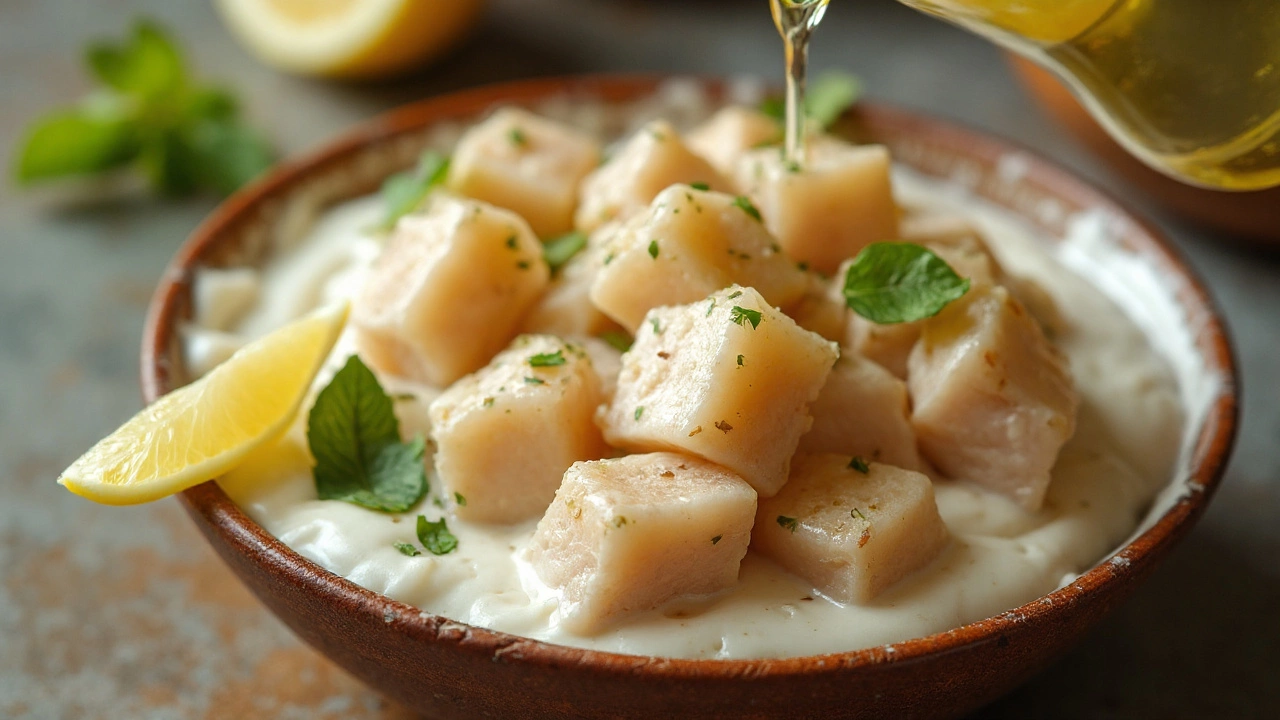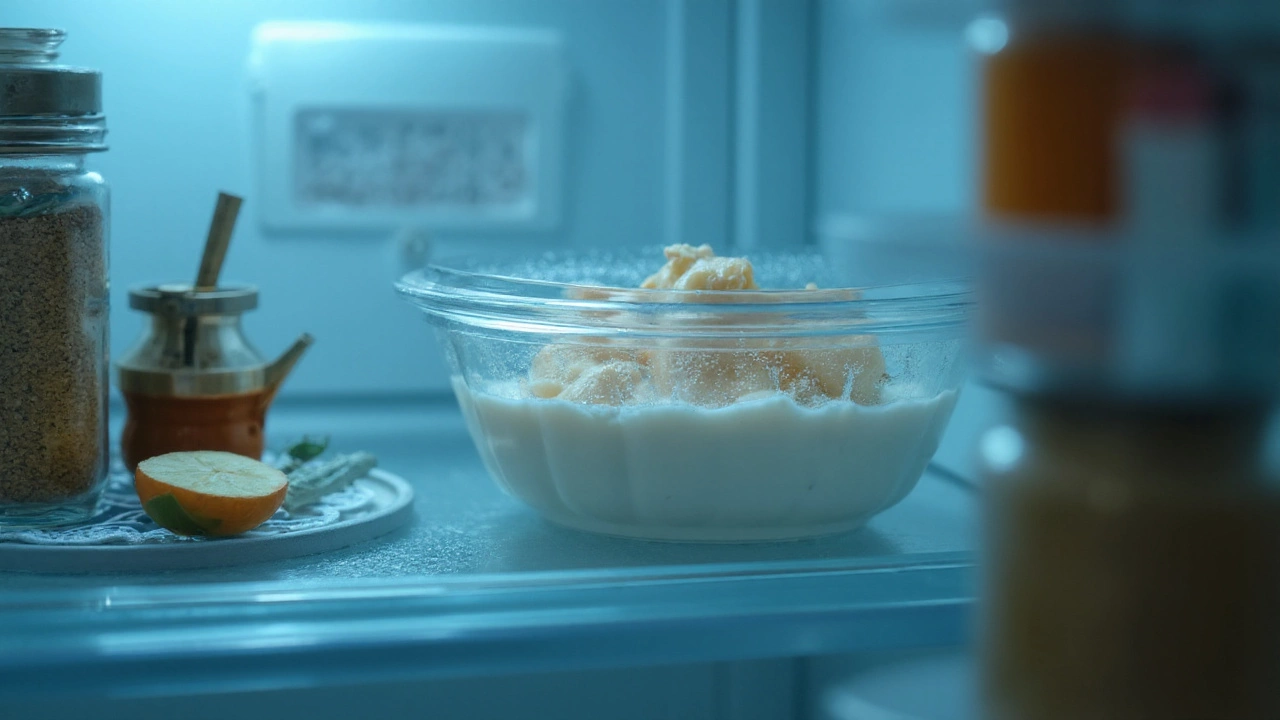How Long Can You Leave Chicken in a Yogurt Marinade? Safe Times & Tips

Yogurt Marinade Safe Time Checker
Yogurt Marinade is a culinary blend of plain yogurt, spices, and sometimes acidic additives like lemon juice, used to tenderise and flavour meat, especially chicken.
Quick Take
- Refrigerate at ≤4°C (40°F) at all times.
- For boneless chicken pieces, 4‑8hours gives a tender, juicy result.
- Whole chicken or bone‑in cuts can safely sit 12‑24hours.
- Never exceed 48hours-bacterial growth outweighs texture benefits.
- Check pH: a yogurt base around 4.5‑5.0 keeps the environment hostile to most pathogens.
Why Yogurt Works Its Magic
Yogurt contains Lactic Acid (a mild organic acid produced by fermentation). This acid gently lowers the pH of the meat’s surface, denaturing proteins and allowing them to unwind without turning rubbery. The result is a softer bite and a subtle tang that pairs perfectly with Indian spices such as garam masala, turmeric, and cumin.
Unlike strong acids like vinegar, the pH of yogurt stays in the 4.5‑5.0 range, which is low enough to inhibit many spoilage bacteria yet high enough to preserve the meat’s natural juiciness.
Food Safety Basics
Two factors dominate safe marination: temperature and time.
- Refrigeration Temperature (typically ≤4°C/40°F) slows bacterial metabolism dramatically.
- Shelf Life of a marinated product is the period during which the risk of pathogen growth remains low.
If either parameter slips, Bacterial Growth (especially Clostridium perfringens and Salmonella) can surge, leading to foodborne illness.
Recommended Marination Times
Time guidelines vary with cut size, bone presence, and the desired flavour depth.
| Marinade Base | Typical Safe Window (Refrigerated) | Texture Effect | Flavor Intensity |
|---|---|---|---|
| Yogurt | 4‑24hours (boneless 4‑8h, bone‑in up to 24h) | Soft, moist | Medium‑high, tangy |
| Buttermilk | 6‑24hours | Very tender | Light, buttery |
| Lemon/Vinegar | 1‑4hours (high acidity) | Can become mushy if over‑done | Sharp, bright |
| Oil‑Only | 12‑48hours | Moderately tender | Rich, subtle |
The yogurt column shows the sweet spot where safety meets texture. Going beyond 24hours with bone‑in pieces rarely adds flavour, but it does raise the risk of spoilage.

How to Test When It’s Ready
Use both visual and tactile cues:
- The surface should be slightly glossy from the yogurt coating.
- When you press the meat, it should feel slightly firmer, not mushy.
- If a sour or off‑smell appears, discard immediately-this signals pH collapse and bacterial activity.
Best Practices for Storing the Marinade
Follow these steps to keep your chicken safe and tasty:
- Place the chicken and yogurt mixture in a non‑reactive container (glass or food‑grade stainless steel).
- Seal tightly to avoid cross‑contamination with other foods.
- Label with the start time; set a reminder for the maximum safe window.
- Never reuse the leftover marinade as a sauce unless you boil it for at least 5minutes.
These practices align with guidance from food‑safety authorities in the UK and US, who stress clear labeling and proper refrigeration.
Common Mistakes and How to Avoid Them
Even seasoned cooks slip up. Here are the usual culprits and quick fixes:
- Leaving the bag out of the fridge. Keep the marinating container on the bottom shelf away from door openings.
- Marinating at room temperature for more than 30minutes. Transfer to the fridge the moment you finish mixing.
- Using full‑fat Greek yogurt with too much thickness. Thin it with a splash of water or milk to ensure even coating.
- Over‑marinating boneless strips. Set a timer; 5‑6hours is enough for most cuts.
Related Topics to Explore
If you liked this deep‑dive, you might also enjoy:
- Buttermilk Chicken - a similarly gentle acidic base.
- Tandoori Marinade - how high‑heat cooking changes texture.
- Food‑Safety Temperature Charts - quick reference for fridge, freezer, and cooking temps.
Bottom Line
The sweet spot for chicken in a yogurt marinate is 4‑24hours, depending on cut size and whether bones are present. Keep everything chilled, watch the clock, and you’ll end up with juicy, tender meat that’s safe to eat.

Frequently Asked Questions
Can I marinate chicken in yogurt at room temperature?
No. Leaving the chicken out for more than 30minutes lets bacteria multiply fast. Always refrigerate at ≤4°C (40°F) from the moment you mix the yogurt.
Is it safe to reuse the leftover yogurt marinade as a sauce?
Only if you bring it to a rolling boil for at least 5minutes. Boiling kills any bacteria transferred from raw chicken.
How does the acidity of yogurt compare to lemon juice?
Yogurt typically sits at pH4.5‑5.0, while lemon juice is around pH2.0‑2.5. The milder acidity of yogurt tenderises without making the meat mushy, giving a smoother texture.
What is the maximum safe marination time for bone‑in chicken?
Up to 24hours in the fridge. Beyond that, the risk of bacterial growth outweighs any extra flavor you might gain.
Do I need to add extra salt to a yogurt marinade?
Yes, a modest amount (½-1tsp per cup of yogurt) enhances flavor and helps the meat retain moisture during cooking.
Can I freeze chicken already marinated in yogurt?
Absolutely. Freeze in an airtight bag for up to 2months. Thaw in the fridge before cooking; treat the thawed product as if it had just been marinated.